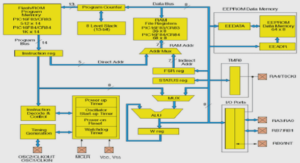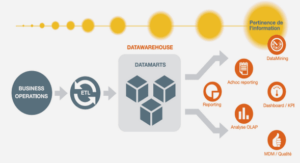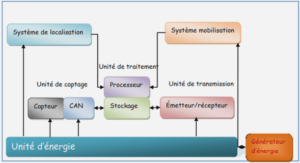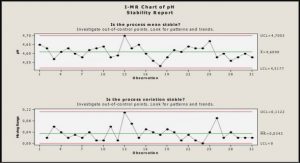Isoprobabilist transformation and Hasofer-Lind reliability index
A PROBABILISTIC MODEL FOR THE ONSET OF HIGH CYCLE FATIGUE (HCF) CRACK PROPAGATION: APPLICATION TO HYDROELECTRIC TURBINE RUNNER:
Abstract:
A fatigue reliability model for hydroelectric turbine runners is presented in this paper. In the proposed model, reliability is defined as the probability of not exceeding a threshold above which HCF contribute to crack propagation. In the context of combined LCF-HCF loading, the Kitagawa diagram is used as the limit state threshold. Two types of crack geometries are investigated: circular surface flaw and embedded flaw in asemi-infinite medium.Theaccuracy of FORM/SORM approximations was considered acceptable for engineering purpose in our application given the minimal numerical burden posed by such a method compared to Monte Carlo simulations. Our results show that the probability of an embedded flaw close to the surface has a major influence on reliability. Furthermore, we observe that the assumption that crack geometrical characteristics are independent leads to non-conservative results.
Introduction:
The reliability assessment of structural components is often limited by our capacity to select relevant models and proper limit states. In structures, such as large Francis hydroelectric turbine runners, where the cost of downtime is high and in situ inspection methods are limited, cracks often reach a detectable size only after the onset of High Cycle Fatigue (HCF). Furthermore, because large Francis runners can sustain significant amount of damage without incurring safety issues, the main concerns are repair cost and downtime. Hence, a crack must be repaired as soon as possible in order to minimize the cost of repair and concurrently the time between inspections must be maximized to reduce downtime. This leads to the following dilemma: if the HCF onset has occurred, longer time between inspection leads to longer cracks to repair; yet, if the component is inspected before the HCF onset, we incur downtime and maintenance costs with limited information on the state of the structure because the detectable flaw size is not reached. Therefore, we propose to move away from the typical fatigue limit, as commonly seen in SN curve and critical crack length,which do not adequately reflect this reality,in favour of a limit state directly related to the HCF onset.
In this paper, the HCF is defined as the contribution to crack propagation by small amplitude stress cycles,leading to the rapid growth.Inthiscase,the Low Cycle Fatigue (LCF) part of the loading is composed of the large amplitude stress cycles which contribute initially to the crack growth. These large amplitude cycles are less frequent than the small amplitude cycles of the HCF part of the loading. A schematic representation of an LCF+HCF combination is presented in Figure 2.1 (Byrne et al., 2003). We observe, in Figure 2.2, that this representation is similar to the strain measured during a typical loading sequence if the startup phase of the sequence is neglected. The overall amplitude of the transient observed during the startup phase is directly related to the control scheme used (Gagnon et al., 2010a, 2012a) and its impact on the runner reliability will not be investigated in this paper. For a typical hydroelectric turbine runner, we assume that the HCF will induce a rapid crack growth to a size above detection limits, which will then becomes proportional to HCF loading rather than to a limited number of transients LCF events. Notice that this definition is compatible with the one used in the review work done by Nicholas (Nicholas, 2006).
ON THE STOCHASTIC SIMULATION OF HYDROELECTRIC TURBINE BLADES TRANSIENT RESPONSE
Introduction:
Reliable prediction of structural component fatigue life depends mostly on the proper assessment of damaging events severity and variability during the expected service life. The cost of in situ measurement and the limited time period over which some structures can be monitored often render the extrapolation of the available data difficult. The extrapolation methods generally used for fatigue analysis involve statistical modeling of the rainflow amplitude histogram, in which rainflow amplitude histograms are randomly generated using kernel smoothing to convert a reference rainflow histogram to a probability distribution (Dressler et al., 1996; Socie, 2001; Socie et Pompetzki, 2004). Other known methods involve the use of extreme value theory (Johannesson et Thomas, 2001; Johannesson, 2006) or neural network (Klemenc et Fajdiga, 2006, 2005, 2002). The main drawback of these approaches is the need for a large number of measured realizations in order to construct the underlying statistical model.
In structures such as hydroelectric Francis turbine runners, sometimes only a single recorded occurrence of a given transient event is available. Due to time limitations, key events such as runner startup, load rejection or shutdown are often measured only once. Knowing that some of these events account for most of the damage sustained by the structure during its expected life (Gagnon et al., 2010a,b), proper simulation tools are needed in order to build realistic long-term service histories. In this paper, we propose the use of non-stationary stochastic modeling for the simulation of the strain response of Francis turbine runner blades during startup. Two methodologies are investigated: the first, developed by Wang (Wang, 2007), is characterized by the use of Stationary Wavelet Decomposition (SWD), and the second, developed by Wen and Gu (Wen et Gu, 2004, 2005), is characterized by the use of Empirical Mode Decomposition (EMD). In both of these methodologies, the signal is generated using a random phase shift between the analytical signal representation for each subcomponent of the signal. These two methods were initially developed for earthquake and wind loading simulations. We intend to investigate their applicability to rotating machinery such as hydroelectric turbines. The simulated realizations will be evaluated using signal energy, extreme value distribution and rainflow amplitude histogram as quantitative criteria. Both the extreme value distribution and the rainflow amplitude histogram have been chosen for their relevance in fatigue analysis; signal energy was chosen as a global indicator of simulation quality.
This paper is organized as follows: first, simulation methodologies and theoretical background are described. Then, measured transient response data are presented, followed by an overview of the quantitative criteria. Finally the results and their implications are discussed. The paper concludes by discussing the applicability of the proposed stochastic model for simulating of transient responses observed in rotating machinery.
Simulation Methods:
Although simulation methods based on stationary processes are widely used and well developed (Grigoriu, 1995), difficulties arise when one needs to construct a stochastic simulation model for the transient events often encountered in physical processes. Many non-stationary simulation methods have been developed based on modulated processes, which were first introduced by Priestly (Priestley, 1965) using the concept of evolutionary power spectra. These methods requires strong assumptions on the parametric form of the modulating function, ergodicity or the piecewise stationarity of the process in order to estimate model parameters. Among the simulation methods cited by Kareem (Kareem, 2008) in his review of the numerical simulation of wind, the method proposed by Wang (Wang, 2007) possesses characteristics which may alleviate some of the difficulties posed by model parameters estimation. In the method developed by Wang (Wang, 2007), the parameters estimation process is simplified by using the Hilbert transform, which requires fewer assumptions. The method combines SWD and the Hilbert transform to simulate earthquakes and down burst wind records from a single observed realization.The approach is similar to the method developed by Wen and Gu(Wenet Gu, 2005, 2004), which uses EMD instead of SWD for earthquake simulation. Both methods have been shown to provide good results using earthquake ground motion records. Because the methodology does not rely on physical models, it has the potential for application to any non-stationary process.This characteristic is essential for the simulation of transient events for which physical models are unavailable, or where parameters are difficult to obtain given the limited number of realizations available.
|
Table des matières
INTRODUCTION
REVUE DE LITTÉRATURE
CHAPITRE 1 ON THE STOCHASTIC SIMULATION OF HYDROELECTRIC TURBINE BLADES TRANSIENT RESPONSE
1.1 Abstract
1.2 Introduction
1.3 Simulation Methods
1.4 Transient Response Data
1.5 Comparison Criteria
1.6 Simulation Results
1.7 Discussion
1.8 Conclusions
CHAPITRE 2 A PROBABILISTIC MODEL FOR THE ONSET OF HIGH CYCLE FATIGUE (HCF) CRACK PROPAGATION: APPLICATION TO HYDROELECTRIC TURBINE RUNNER
2.1 Abstract
2.2 Introduction
2.3 High Cycle Fatigue (HCF) reliability
2.4 Isoprobabilist transformation and Hasofer-Lind reliability index
2.5 Application examples
2.6 Results and discussion
2.7 Conclusions
CHAPITRE 3 INFLUENCE OF LOAD SPECTRUM ASSUMPTIONS ON THE EXPECTED RELIABILITY OF HYDROELECTRIC TURBINES:A CASE STUDY
3.1 Abstract
3.2 Introduction
3.3 Reliability model
3.4 Case study
3.5 Results
3.6 Discussion
3.7 Conclusions
CONCLUSION
BIBLIOGRAPHIE
![]() Télécharger le rapport complet
Télécharger le rapport complet






